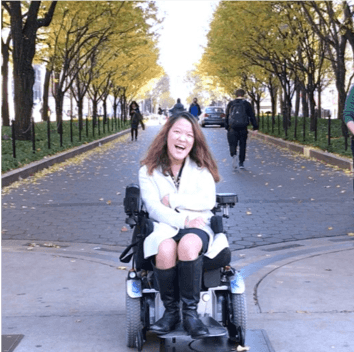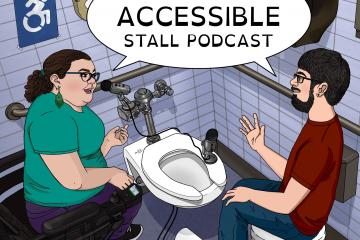How Cerebral Palsy Affects Adults

Although the brain injury that causes cerebral palsy is nonprogressive, adults with CP can experience a variety of symptoms as they age which often depend on the type of CP they have, as well as the level.
Some forms of CP, such as spastic cerebral palsy, cause stiff muscles, exaggerated reflexes, and abnormal movements when walking or trying to move. CP can affect the entire body, but it may also only impact one side of it.
Common CP challenges include:
- Muscle weakness
- Stiff muscles
- Scissor-like movements with legs when walking
- Paralysis
- Involuntary movements with legs when walking
- Involuntary movements in hards, arms, and legs
- Twitching of the face and tongue
- Difficulty swallowing
- Loss of muscle tone
- Floppy limbs that move easily
Premature aging may make it seem as if CP is worsening with age because the condition can slowly compromise the body's ability to move and work effectively. It's important to keep in mind that symptoms of CP will not show up for the first time in adults. If you or a loved one are experiencing new issues with movement, it's likely a result of another condition, not CP. Over time, that strain and demand on the muscles and bones can begin to wear down the body. Eventually, the overuse of joints like those in the knees, ankles, hips, and arms can lead to osteoarthritis, also called degenerative arthritis. For some individuals, premature aging may require the use of mobility aids, such as wheelchairs or crutches. For others, the ability to walk may be lost entirely. Individuals with CP may use up to three to five times the amount of energy that able-bodied people use when they walk and move about. Other signs of premature aging include increased pain, stiff muscles, and problems with the heart or lungs.
functional issues at worK
CP can make certain tasks more difficult, but many people are able to attend school or work full-time with great success and achievement.
There are also accommodations that can make day-to-day activities easier and less physically taxing.
Because of the Americans with Disabilities Act (ADA), employers are required to provide reasonable accommodations for employees with disabilities. These accommodations may include:
- Frequent rest periods
- Devices to reduce physical toll (a stool, for example)
- A parking space closer to the door
- A desk closer to the restroom or office machines
- The use of other assistive devices
Employers aren't allowed to discriminate in their hiring choices because of any disability or special needs.
COMMON MENTAL HEALTH CONCERNS
People living with CP may feel so isolated because of the condition, avoiding events or outings because of physical limitations. This can lead to social isolation, anxiety, and even depression. Depression is more common in individuals with chronic conditions, like CP. In fact, one 2017 study of 501 adults with CP found that 20 percent had depression.
Mental health issues may be overlooked because CP is primarily a physical condition. The focus for treatment may be on improving mobility, decreasing pain, and prolonging energy. However, the effects of depression and mental health issues can significantly impact the quality of life.
The amount of emotional support someone has, how successful they are at coping with disappointments/stress, and whether or not they have an optimistic outlook about the future all have a significant impact on mental health.
OSTEOARTHRITIS & DEGENERATIVE ARTHRITIS
Musculoskeletal abnormalities that may not produce discomfort during childhood can cause pain in adulthood. For example, the abnormal relationships between joint surfaces and excessive joint compression can lead to the early development of painful osteoarthritis and degenerative arthritis. Individuals with CP also may have limited strength and restricted patterns of movement, which puts them at risk for overuse syndromes and nerve entrapments.
PAIN
Individuals with CP may have pain that can be acute or chronic and is experienced most commonly in the hips, knees, ankles, and the upper and lower back. Individuals with spastic CP may have an increased number of painful sites and worse pain than those with other types of cerebral palsy. Treatments include spasticity management aimed at correcting skeletal and muscle abnormalities.
Other medical conditions
Adults have higher than normal rates of other medical conditions secondary to their cerebral palsy, such as hypertension, incontinence, bladder dysfunction, and swallowing difficulties. Scoliosis is likely to progress after puberty when bones have matured into their final shape and size. Women with cerebral palsy can have additional set of challenges accessing gynecological care and related issues.
People with CP use three to five times the energy to complete everyday tasks.





